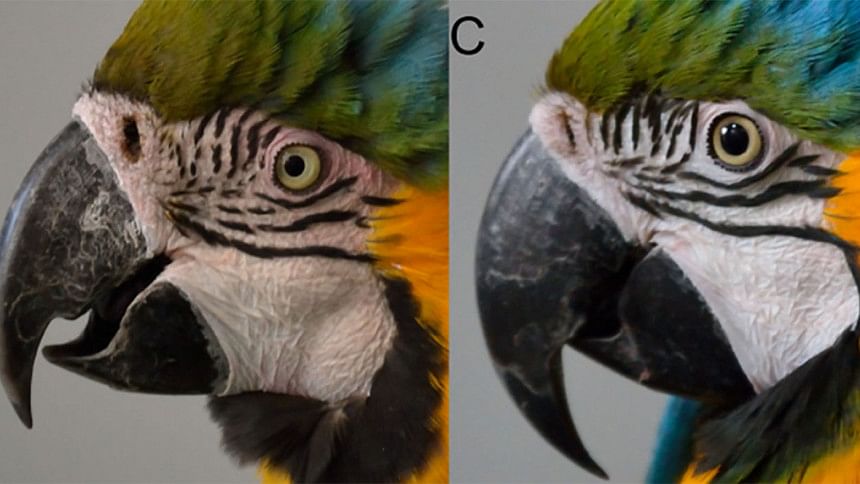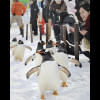Birds that blush: Scientists document an animal mystery

Have you ever heard of macaws that blush, much like humans do, at an emotional moment?
Researchers still don't quite understand how it works, but a French team says they have observed the phenomenon multiple times in a group of five captive blue-and-yellow macaws.
They published their findings on Wednesday in the journal PLOS One.
Blue-and-yellow macaws have a part of their cheeks that is naked, uncovered by feathers, and researchers noticed that this fair skin would redden during interactions with their handlers.
"Birds don't have muscles in their faces," explained lead researcher Aline Bertin of INRA, a French public research institute dedicated to agricultural science.
"Their facial expressions have never been studied."
Anecdotally, people who took care of macaws noticed them blushing, their cheeks reddening with increased blood flow, much like in humans, But they still needed to document the phenomenon.
So they set up an experiment to film and photograph the birds on perches during organized interactions with their habitual human handlers, such as talking and looking at them.
Sure enough, they saw the birds' skin reddened around the eyes during these encounters.
Small-sized experiment
The experiment was limited by its small size-only five birds were studied. So scientists cannot say for certain why the birds appeared to blush.
"We don't know if these birds can feel positive emotions," said Bertin.
But the research could pave the way for more experiments on aimed at "better understanding the sensibilities of birds."
If the emotional lives of birds remain a mystery, plenty is known, however, about their intelligence, which can be high and comparable to that of some mammals.
Many birds are known to be able to use tools in order solve problems, for example.
When it comes to emotions and stress, scientists have described birds ruffling their feathers during mating rituals, or conflict situations.
"People don't usually think of birds as having an emotional life that is as complex as an ape, a dog, or a cat," said Bertin.
"It doesn't shock anyone to see a parrot in a pet store cage. We don't really see this with primates. There's a disconnect there."
Copyright: China Daily/ Asia News Network (ANN)

 For all latest news, follow The Daily Star's Google News channel.
For all latest news, follow The Daily Star's Google News channel. 








Comments